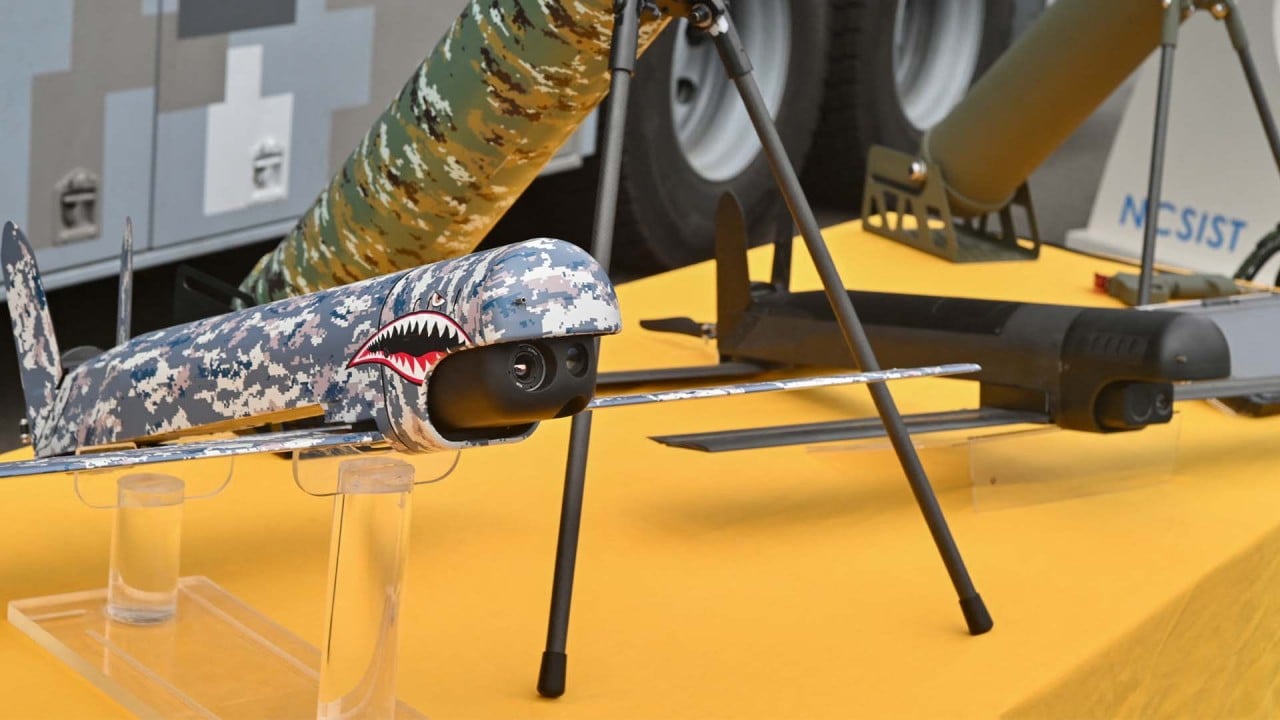
US sends drone ships to navy bases in Japan, signalling new role for driverless vessels in deterring China
- Unmanned surface vessels Mariner and Ranger sail from California to Japanese city of Yokosuka to take part in naval exercises
- Military experts say drone boats part of combat strategy to minimise casualties, and Washington might use them to deter Taiwan conflict
The Mariner and Ranger of the US Third Fleet sailed from California to Yokosuka, Japan, last month as part of the US Navy’s Integrated Battle Problem 23.2 exercise (IBP23.2), according to a statement by the US Seventh Fleet, which is headquartered in the Japanese city.
Before arriving in Yokosuka, the Mariner and Ranger stopped over at the Indo-Pacific headquarters in Pearl Harbour in Hawaii, where two smaller USVs – the medium-sized Hunter and Sea Hawk – took part in another rehearsal last year.
The IBP23.2 is an exercise focused on testing the use of USVs together with manned vessels in the Indo-Pacific.
It was the first time the US Navy has sent its driverless ships over such a long distance. According to the US Seventh Fleet, the Ranger was accompanied by the Arleigh Burke-class guided-missile destroyer USS Shoup when it crossed the Pacific.
Does China’s new drone mother ship have potential as a military vessel?
Lu noted the Ranger also appears to have stopped in Guam and Okinawa, according to a photo published by the Japan Times last month that showed the ship’s navigation path displayed on a screen in its control room.
“Satellite imagery and the maritime traffic automatic identification systems of Guam and Okinawa showed the two USVs and the USS Shoup destroyer were operating together in their long journey, with markings on the Mariner appearing worn-off after experiencing strong winds and waves on the high seas,” Lu said.
He added that the two drone boats were loaded with combinable weapons modules such as the US Navy’s Standard Missile-6, which can perform air defence, terminal ballistic missile defence and anti-ship strike functions.
USV development was highlighted in the Pentagon’s replicator initiative, a military tech innovation plan announced by US Deputy Secretary of Defence Kathleen Hicks in August. Under the plan, the Pentagon aims to develop thousands of UAVs, which has been seen as a response to the rapid increase in Chinese warships in recent decades.
According to the Rand Corporation, the US continues to have the world’s most powerful navy, with a combined tonnage of around 4.6 million tonnes. But it has only around 280 warships, compared with China’s 425 active warships as of August 2023, which the Pentagon expects to increase to 440 by 2030.
The US Navy’s Chief of Naval Operations (CNO) Navigation Plan 2022 calls for the American naval fleet to grow to about 523 ships by 2045, with 373 manned ships and 150 unmanned ships.
“It’s impossible for the American shipbuilding industry capacity to catch up with China’s ability to mobilise an entire nation to do one single task,” Lu said, adding that the replicator initiative and the IBP exercises, the first of which was held in May, were Washington’s best options for catching up with Beijing.
Scott Savitz, a military expert at the Rand Corporation, said Taiwan should work with the US to launch swarms of explosive USVs to deter Beijing from attacking the self-ruled island.
The Ukraine war has shown the prowess of explosive USV technology. Savitz noted that while Ukraine has been supported by Starlink, the satellite internet network operated by SpaceX, Taiwan does not have its own satellite network to allow drones and unmanned ships to communicate and connect. But this obstacle can be overcome.
“Communications will not be an insuperable barrier, even if Starlink declines to become involved. There are other companies that provide satellite communications, and more will appear,” Savitz said.
“The US military also has such capabilities, which it could potentially enable Taiwan to use. In addition, the required volume of communications will likely diminish as USV autonomy becomes more advanced.”
Call for PLA to use AI for ‘smart deterrence’ against US over Taiwan
Beijing regards the self-ruled island as part of its territory, which it intends to recover – by force if necessary. Most countries, including the United States, do not recognise Taiwan as an independent state, but are opposed to any unilateral change of the cross-strait status quo by force.
The mainland has also made significant breakthroughs in USV technology. In March of last year, the state-owned China State Shipbuilding Corporation unveiled a model of a 340-tonne multipurpose unmanned combat surface vessel (UCSV) with a maximum speed of 42 knots and a range of 4,000 nautical miles (about 7,410km), according to Janes Defence News.
A photo released by China State Shipbuilding Corporation earlier this year showed a smaller USV prototype equipped with highly advanced radar. The radar systems will make the drone boat more difficult to detect, allowing it to hit targets precisely when operating as a “suicide vessel” or doing close-in reconnaissance.
But Savitz said the US Navy, which has more real combat experience than its Chinese counterpart, had some advantages in developing USV technology.
“Any precise assessment of the relative strengths of various systems would be classified,” he said. “China is claiming some successes, though I have long observed that authoritarian systems are much more prone to exaggeration of military capabilities than democracies are.”


